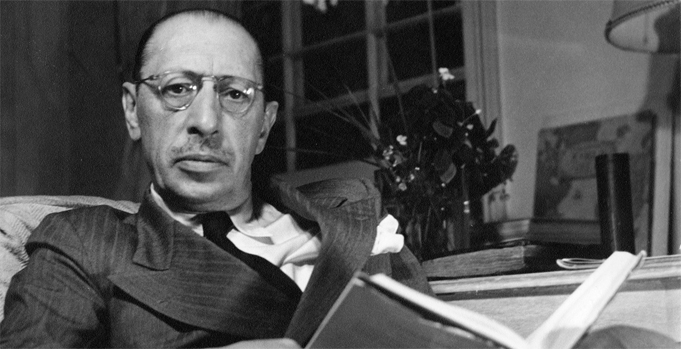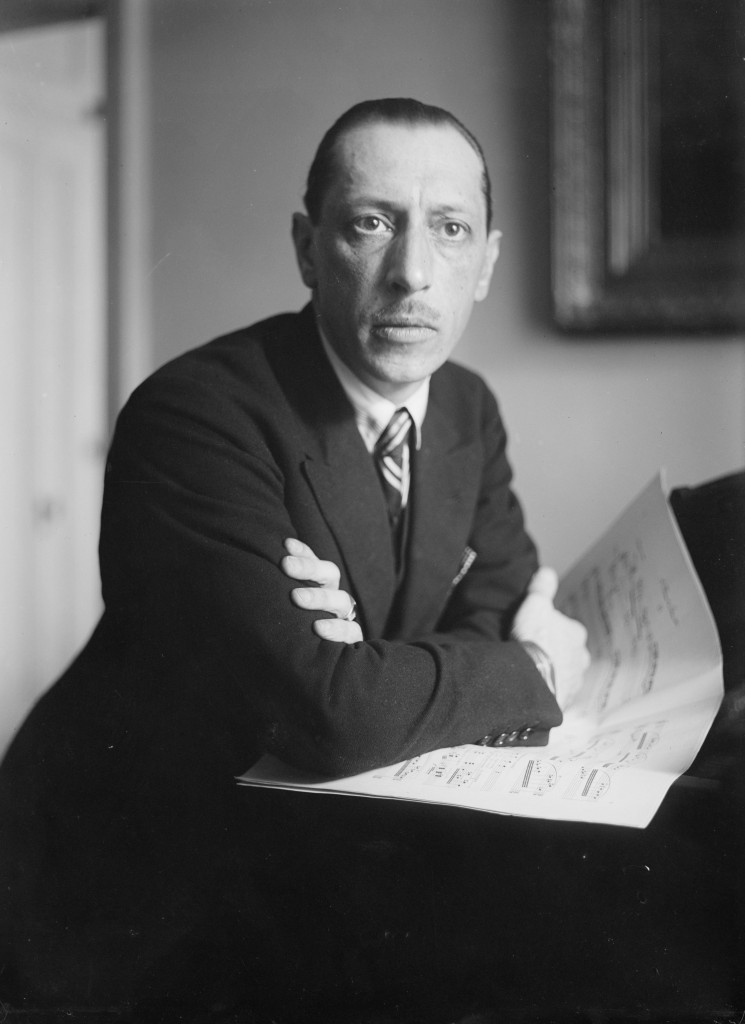Igor Stravinsky (1882–1971), a seminal 20th-century composer, revolutionized music with his innovative approach to rhythm, harmony, and orchestration. His diverse body of work spans multiple styles and periods, reflecting his evolution from Russian nationalist traditions to neo-classical and serialist techniques. Here are ten of Stravinsky’s most significant compositions:
1. The Firebird (1910)
Overview: Stravinsky’s first major success, The Firebird, is a ballet based on Russian folklore. It tells the story of Prince Ivan, who captures a magical Firebird and, with her help, defeats the evil sorcerer Kashchei.
Significance: The Firebird established Stravinsky as a prominent composer. Its lush orchestration, vivid colors, and use of Russian folk themes captured the audience’s imagination. The work is also notable for its innovative use of the orchestra, particularly in the shimmering textures and dynamic contrasts.
Highlights:
- Introduction: Evocative orchestral textures set the mystical scene.
- Dance of the Firebird: Showcases vibrant orchestration and lively rhythms.
- Finale: A triumphant conclusion with a powerful orchestral build-up.
2. Petrushka (1911)
Overview: This ballet depicts the tragic love story of three puppets at a Russian fair: Petrushka, the Ballerina, and the Moor. Stravinsky uses polytonality and complex rhythms to create a vivid, bustling atmosphere.
Significance: Petrushka is noted for its use of the “Petrushka chord,” a dissonant combination of two major triads, which became a hallmark of Stravinsky’s style. The ballet’s innovative approach to rhythm and harmony marked a departure from traditional ballet music, emphasizing psychological depth and narrative complexity.
Highlights:
- Petrushka’s Room: Features the distinctive “Petrushka chord.”
- Russian Dance: Energetic and rhythmically complex, reflecting the fair’s excitement.
- The Shrovetide Fair: A bustling portrayal of the fairground with layered textures.
3. The Rite of Spring (1913)
Overview: Perhaps Stravinsky’s most famous work, The Rite of Spring is a ballet that depicts a pagan ritual in which a young girl is sacrificed to ensure the coming of spring. Its premiere caused a notorious riot due to its avant-garde music and choreography.
Significance: The Rite of Spring revolutionized music with its unprecedented use of rhythm, dissonance, and orchestration. The work’s primitive energy, driving rhythms, and innovative use of the orchestra challenged conventional musical norms and had a profound influence on the development of modern music.
Highlights:
- Introduction: Evocative and haunting, setting the primitive tone.
- Dance of the Adolescents: Features brutal, driving rhythms.
- Sacrificial Dance: A powerful, frenzied climax with complex rhythmic structures.
4. Pulcinella (1920)
Overview: Pulcinella is a ballet commissioned by Sergei Diaghilev, based on the commedia dell’arte character Pulcinella. Stravinsky reimagined 18th-century music by Giovanni Battista Pergolesi and other composers, infusing it with modern harmonies and rhythms.
Significance: This work marks Stravinsky’s transition to neo-classicism, characterized by a return to simpler, more transparent textures and forms inspired by earlier music. Pulcinella blends Baroque elegance with Stravinsky’s distinctive modernist touch, creating a playful and engaging piece.
Highlights:
- Sinfonia: A charming overture with light, elegant textures.
- Serenata: A lyrical, graceful movement.
- Finale: Combines traditional forms with Stravinsky’s modern sensibility.
5. Symphony of Psalms (1930)
Overview: This choral symphony sets psalm texts from the Vulgate Bible and is scored for chorus and orchestra without violins or violas. It reflects Stravinsky’s deepening interest in religious themes and his exploration of different musical forms.
Significance: Symphony of Psalms is celebrated for its austere beauty, innovative orchestration, and spiritual depth. The work’s combination of choral and orchestral forces, along with its contrapuntal textures and modal harmonies, creates a solemn yet uplifting atmosphere.
Highlights:
- Exaudi orationem meam: Features rich choral writing and solemn orchestration.
- Expectans expectavi Dominum: A meditative, prayerful movement.
- Laudate Dominum: Concludes with an uplifting and jubilant choral texture.
6. Symphony in C (1940)
Overview: Composed during Stravinsky’s exile in the United States, this symphony reflects his neo-classical style. It is characterized by clear forms, elegant textures, and a blend of modern and classical elements.
Significance: Symphony in C exemplifies Stravinsky’s mature neo-classical style, balancing formal clarity with rhythmic vitality and harmonic innovation. The work is noted for its transparent orchestration and meticulous craftsmanship.
Highlights:
- First Movement: A lively and rhythmic Allegro with a classical structure.
- Second Movement: A lyrical and introspective Larghetto concertante.
- Finale: A brisk and energetic movement with intricate counterpoint.
7. The Soldier’s Tale (L’Histoire du soldat) (1918)
Overview: This theatrical work combines narration, dance, and instrumental music to tell the story of a soldier who trades his fiddle to the devil for wealth, only to realize he has lost his soul. It is scored for a septet of instruments and requires minimal staging.
Significance: The Soldier’s Tale is notable for its economical use of forces, blending elements of folk music, jazz, and classical traditions. The work’s innovative narrative structure and rhythmic complexity make it a unique and compelling composition.
Highlights:
- Marche du soldat: A catchy, syncopated march.
- Petite concert: A lively instrumental interlude.
- Triumphal March of the Devil: A dark, sardonic conclusion.
8. Symphony in Three Movements (1945)
Overview: Composed during World War II, this symphony reflects the tumultuous period. It features three contrasting movements with a blend of rhythmic drive, lyricism, and dramatic contrasts.
Significance: Symphony in Three Movements is characterized by its rhythmic vitality, innovative use of orchestral color, and structural clarity. The work combines elements of Stravinsky’s earlier styles with his wartime experiences, creating a powerful and dynamic composition.
Highlights:
- First Movement: A vigorous and rhythmically complex Allegro.
- Second Movement: A lyrical and serene Andante.
- Finale: A dramatic and energetic movement with bold orchestral gestures.
9. Orpheus (1947)
Overview: Orpheus is a ballet that reinterprets the Greek myth of Orpheus and Eurydice. Stravinsky’s score reflects his neo-classical style, with clear forms, elegant textures, and a lyrical, contemplative quality.
Significance: This work is notable for its restrained beauty, lyrical grace, and innovative use of orchestral color. Orpheus exemplifies Stravinsky’s ability to blend classical forms with modern sensibilities, creating a timeless and poignant ballet score.
Highlights:
- Introduction: A serene and reflective opening.
- Dance of the Blessed Spirits: Lyrical and graceful, with delicate orchestration.
- Orpheus’ Lament: A poignant and expressive movement.
10. Agon (1957)
Overview: Agon is a ballet for twelve dancers, composed during Stravinsky’s late period. It features a series of dance movements inspired by 17th-century French dance forms, blending twelve-tone techniques with neoclassical elements.
Significance: Agon represents Stravinsky’s exploration of serialism within a dance context. The work’s intricate structure, innovative use of rhythm, and blend of modern and classical elements make it a fascinating and challenging composition.
Highlights:
- Pas-de-quatre: Features complex rhythms and a dynamic interplay of instruments.
- Bransle Simple: A lively and rhythmically intricate movement.
- Double Pas-de-quatre: Combines classical dance forms with modern harmonic techniques.
Conclusion
Igor Stravinsky’s compositions are landmarks in 20th-century music, reflecting his ability to innovate and adapt across different styles and periods. From the early Russian ballets that established his fame to the neo-classical and serialist works of his later years, Stravinsky’s music continues to captivate and inspire audiences with its originality, vitality, and profound artistry.


Comments are closed